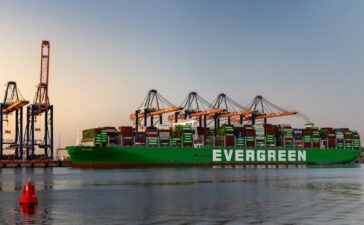The refrigerated-transports sector in Australia is important because it helps keep perishable products, e.g., food, pharmaceuticals and other temperature-sensitive goods, maintain their integrity. Yet, this sector is also a sector of high energy use and environmental footprint. As the climate change and sustainability concerns become more prominent, companies are implementing eco-friendly functions to minimize carbon footprints, at the same time with the sustainable cold chain logistics. The shift towards greener operations is essential not only for environmental preservation but also for cost reduction and regulatory compliance. Some measures are being put into effect throughout the industry to further improve sustainability, but high performance and reliability need to be retained.
Adoption of Energy-efficient Refrigeration Technologies
Substantial advances toward sustainable refrigerated transport can be achieved by employing energy-efficient refrigeration devices. Conventional diesel-driven refrigeration systems have a significant carbon dioxide and fuel input footprint. In an effort to offset it, corporations are recently devoting for hybrid and electric refrigeration appliances that use less energy and emit fewer pollutants. Advanced cooling systems, such as eutectic refrigeration and cryogenic cooling, are also gaining popularity for their efficiency and reduced environmental impact. These technologies harness new approaches to keep suitable temperatures without heavy dependence on fossil fuels, thus reducing greenhouse gas emissions. Combining smart temperature control systems better improves energy consumption by dynamically modifying cooling demand according to the real-time scenario.

Utilization of Sustainable Fuels and Electric Vehicles
The shift to environmentally friendly substitutes to traditional refrigerants is another of the main actions in promoting greener refrigerated transport. Numerous companies are investigating biofuels that are produced from renewable sources, and at a substantially lower emission rate than traditional diesel. Furthermore, the use of electric and hydrogen-charged reefer trucks is slowly being expanded with the growing progress of battery technology and charging infrastructure. Electric refrigerated cars provide a cleaner solution as they do not emit emissions from tailpipes, but at the same time allow reduced total operating costs. The combination of regenerative braking systems and solar-assisted refrigeration capabilities also significantly improves performance and positions these vehicles as a sustainable cold chain logistics option for Australia.
Implementation of Route Optimization and Load Efficiency
The efficiency of transportation route optimization and the load utilization are essential parameters that lead to the min. Enterprises are using state of the art logistics software and artificial intelligence to assess the traffic movements, weather forecasts and delivery planned, in order to find the best possible routes. This is not only fuel saving, but could also improve the speed and trust of delivery. Moreover, by increasing load efficiency (i.e., trucks running at maximum capacity) fewer trips are needed and therefore emissions are lessened. The presence of multi-temperature boxes in refrigerated trucks enable to transport a variety of products inside the same vehicle, ensuring an efficient use of space, and ensuring appropriate temperature constraints.
Use of Eco-friendly Refrigerants
Refrigerants are an important component for keeping temperatures in cold chain logistics under control, however, they have a high global warming potential associated with traditional refrigerants such as hydro-fluorocarbons (HFCs). To solve this problem, the industry is moving towards natural-based and low-global-warming-potential (GWP) refrigerants such as ammonia and carbon dioxide and hydrocarbons. These options have very low environmental footprint, and they offer high cooling capabilities. Also a great number of companies are deploying equipment for leak detection and recovery of refrigerants in order to prevent the escape of potentially toxic substances in the atmosphere. The use of eco-friendly refrigerants is consistent with regulations in Australia and the global commitments to decrease greenhouse gas emissions, consequently an important transition towards sustainable refrigerated transportation.

Integration of Renewable Energy Sources
Renewable energy is playing an increasing role in making Australia’s transport sector more sustainable, especially in refrigerated transport Brisbane market. Solar panels attached to refrigerated truck trailers and warehouses, generate clean energy to run refrigeration devices and decrease the reliance on fossil fuels. Companies are also exploring wind and hydroelectric energy to support their cold chain operations. Battery storage systems are becoming more effective so that refrigerated vehicles can function effectively when renewable energising sources are not generating any power. Using renewable energy in operating companies, companies can dramatically reduce their carbon footprint and long-term energy cost. Government incentives and grants are also promoting companies to take up sustainable energy solutions in cold chain logistics.
Waste Reduction and Sustainable Packaging
Waste management is another of the key behaviours leading to eco-friendly practices in refrigerated transport. Companies are currently trying to minimize food loss by upgrading storage and monitoring environments to achieve spoilage avoidance. Smart sensors and IoT-enabled tracking systems can be used to deliver real-time temperature and humidity information, such that there will be a continuous supply of fresh goods during transport. Additionally, the use of sustainable packaging materials, such as biodegradable and recyclable containers, is becoming more prevalent in the industry. Reducing disposable plastics and choosing alternatives to disposable packaging play their part towards broader environmental protection. The impact of such efforts is enhanced by educating the stakeholders, including suppliers and consumers, on the value of sustainable packaging.





